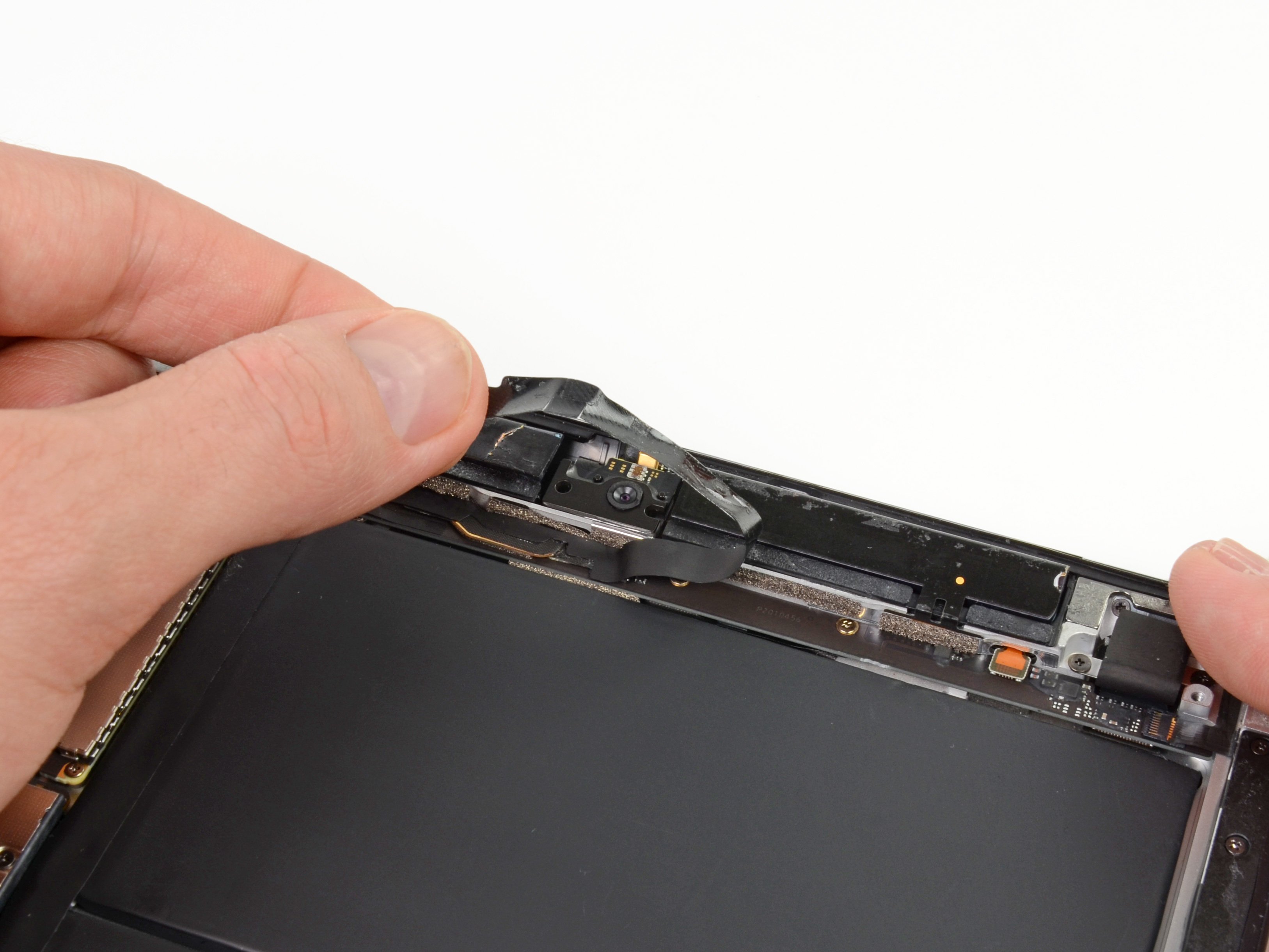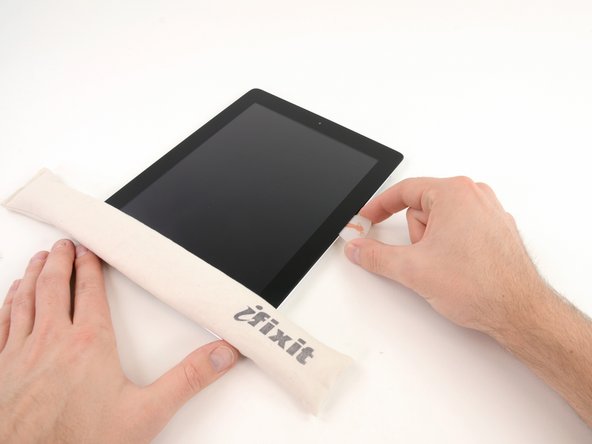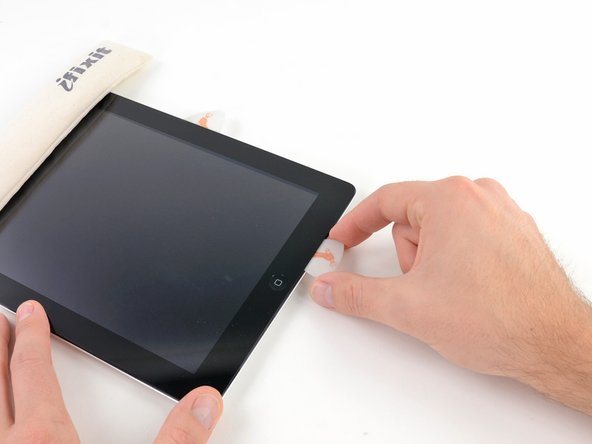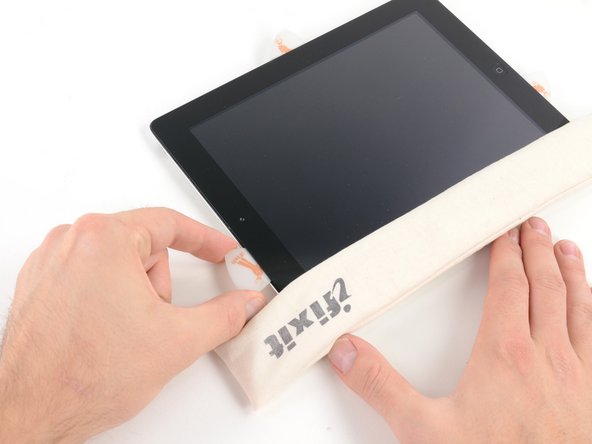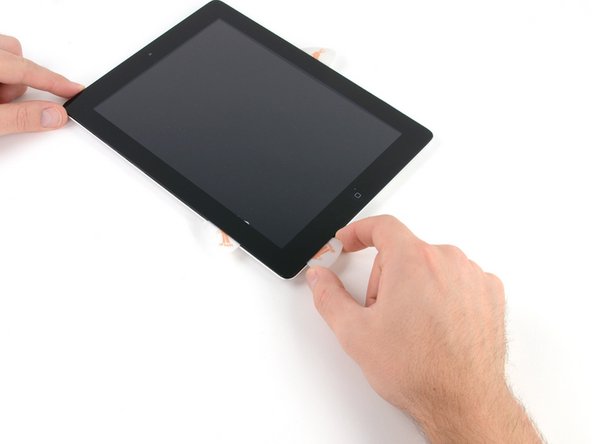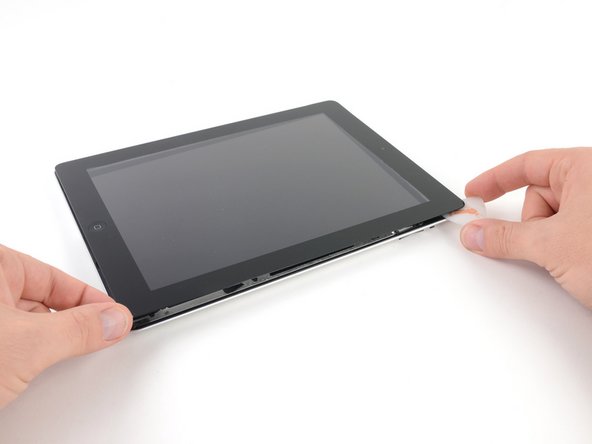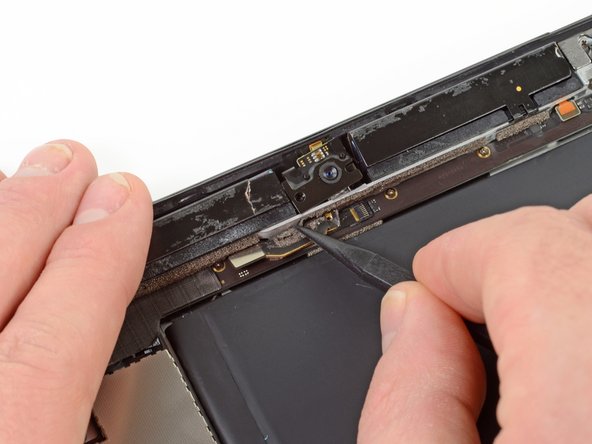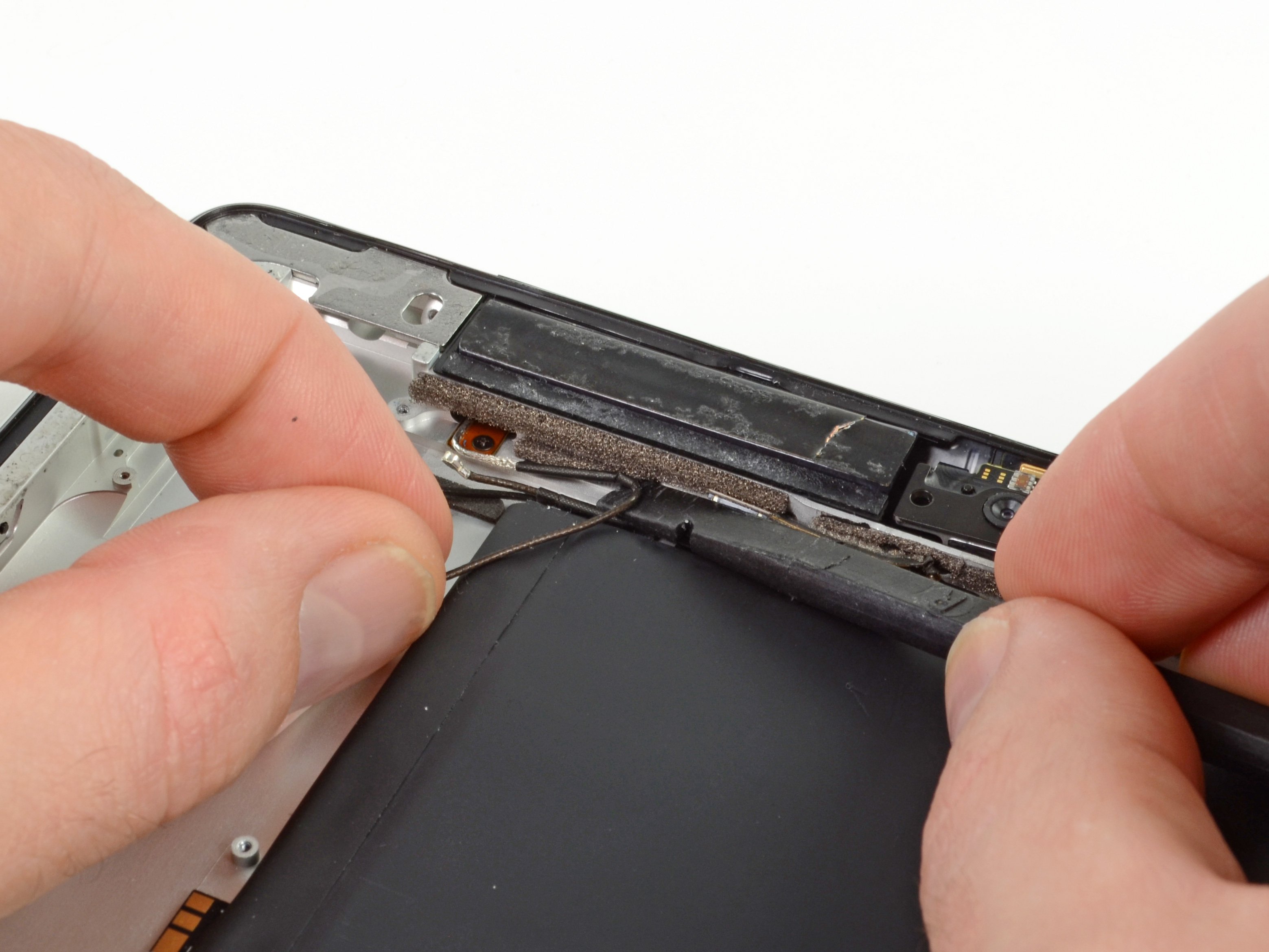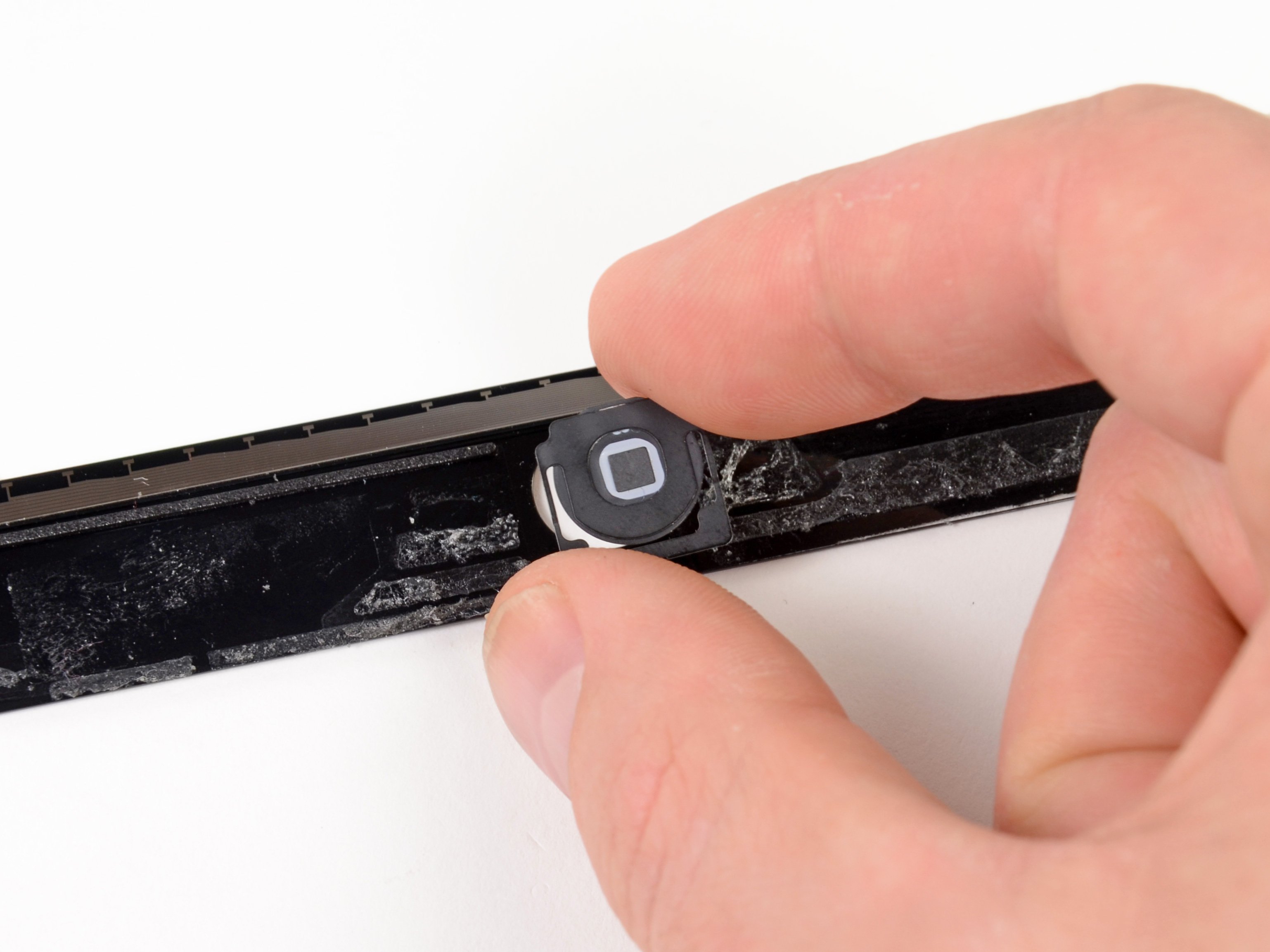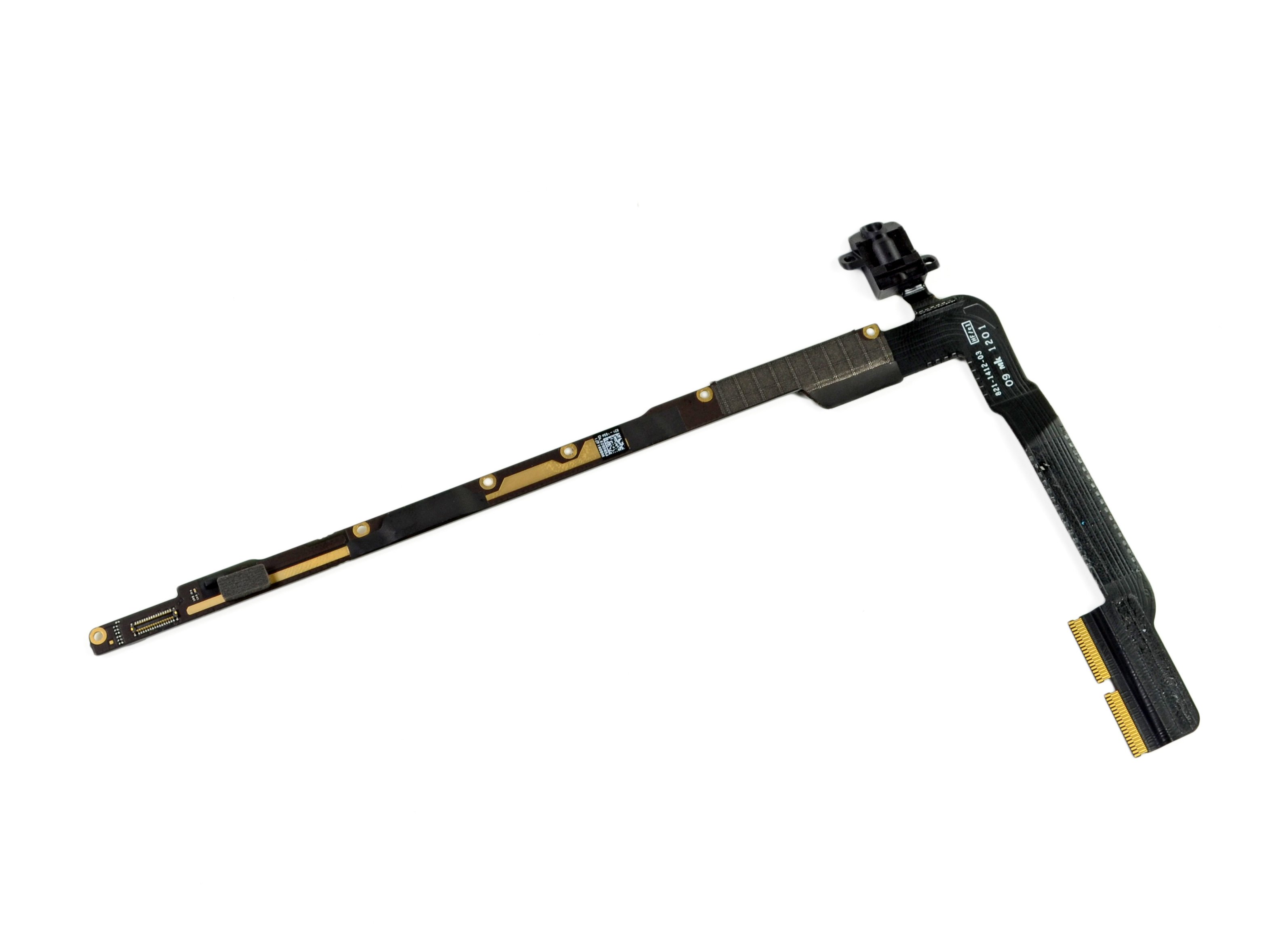iPad 3 4G Front Camera Replacement
Duration: 45 minutes
Steps: 43 Steps
Get ready to give your device a little facelift by swapping out that front-facing camera! It's easier than pie, and we're here to guide you through every step of the way. If you hit a snag, remember that you can always schedule a repair for a helping hand.
Step 1
For carousel microwaves: Ensure that the plate is spinning like a champ! If your iOpener gets a little too cozy and gets stuck, it could end up overheating and causing a burn. Keep it moving for a smooth operation!
Before diving into this repair adventure, give your microwave a little TLC! A quick clean-up will prevent any stubborn gunk from hitching a ride on your iOpener. Let's keep things neat and tidy!
- Pop the iOpener right in the middle of the microwave and let it do its thing.
Tools Used
Step 2
Keep an eye on that iOpener—don’t let it overheat or it might just pop! Never heat it above 100˚C (212˚F).
If your iOpener looks puffed up or swollen, steer clear—no touching!
If the middle part is still too toasty to handle, keep using it gently while it cools down a bit before reheating. When heated right, it should stay warm for up to 10 minutes.
Depending on how powerful your microwave is, you might need to adjust the heating time a bit. The iOpener is ready when it’s just a tad too hot to comfortably hold.
- Warm up the iOpener in the microwave for about thirty seconds to get it nice and toasty.
- If it cools down while you’re working, just pop it back in the microwave for another thirty seconds to keep the heat going.
Tools Used
Step 3
Heads up! The iOpener will be piping hot, so handle it with care. If you want to keep your fingers safe, grab an oven mitt or something similar.
- Carefully take the iOpener out of the microwave by grabbing one of its two flat ends—steer clear of the hot middle!
Tools Used
Step 4
Heads up! The iOpener gets seriously hot, so grab it only by the end tabs to keep your fingers safe and sound.
No microwave? No problem! Warm up your iOpener by gently heating it in some boiling water instead.
- Grab a pot or pan and fill it up with enough water to give your iOpener a nice, cozy bath.
- Bring that water to a roaring boil, then turn off the heat. Safety first!
- Carefully place the iOpener into the hot water for about 2-3 minutes. Make sure it's getting all the love and is fully submerged.
- Using tongs (because, you know, hot water), fish out the warm iOpener from its steamy bath.
- Give the iOpener a good dry-off with a towel to ensure it's ready for action.
- And voilà! Your iOpener is all set to go! If it needs a little more warmth, just repeat the process: boil the water, turn off the heat, and let your iOpener soak for another 2-3 minutes.
Tools Used
Step 5
Rock those safety glasses to keep your peepers safe, and remember to treat that LCD screen with care!
This keeps those sneaky glass shards from flying everywhere and gives the screen some solid backup while you’re prying and lifting.
- Got a cracked screen? No worries! Keep those pesky shards in check and protect yourself during the repair by slapping on some tape over that glass.
- Layer on some clear packing tape over your iPad's display, making sure to cover every inch of that face—overlap those strips like a pro!
- Now, just follow the rest of the guide to the best of your ability. Keep in mind, once the glass is shattered, it might keep on cracking as you work your magic. You might want to grab a metal prying tool to help scoop out those shards!
Step 6
Heads up! Since you might be handling some broken glass here, we recommend rocking a pair of safety glasses to keep those sneaky shards from causing trouble.
- Place the iOpener flat against the right edge of your iPad, making sure it’s snug and making good contact with the surface. We want that warmth to work its magic!
- Give it a little time—about 90 seconds—before you start working on opening the front panel. Patience is key here!
Tools Used
Step 7
Getting that opening tool wedged between the glass and plastic might take a bit of muscle. Stay cool, and gently wiggle the plastic tool back and forth until it slips in. Patience is your best friend here!
- You'll notice a small gap in the adhesive ring on the upper right corner of the iPad, about 2.0 inches (~5 cm) from the top. It's a bit of a weak spot, and we're going to work with that.
- Align your tool with the mute button, then carefully slide the tip of a plastic opening tool into the gap between the front glass and the plastic bezel. Just insert the tip enough to create a small opening—nothing too deep, just enough to get things moving.
Step 8
- Be sure to position your tool just right—snugly between the plastic display bezel and the front panel glass.
Step 9
- Gently wedge the tip of your plastic opening tool between the front glass and the plastic bezel. Once it’s in, carefully slide a plastic opening pick into the gap, right next to where you’ve placed the tool.
Step 10
- Gently pull the plastic opening tool away from the iPad, then slide the opening pick under the front glass, pushing it in about 0.5 inches. Take your time and be careful!
Step 11
- As you carefully loosen the adhesive on the right edge of the iPad, go ahead and warm up the iOpener again, then pop it back onto the bottom edge to keep things nice and toasty.
Tools Used
Step 12
The adhesive can be quite tenacious, so you might need to channel your inner Hercules. Just remember to take it slow and steady!
If you catch a glimpse of the opening pick peeking out from under the front glass, gently pull it out just a smidge. While diving this deep with the pick won’t cause any harm, it might leave a bit of adhesive residue on the LCD. No biggie, just a little reminder of the adventure!
- As you warm up the bottom edge with your trusty iOpener, start peeling back that adhesive along the right edge of your iPad. Let's get that sticky stuff moving!
- Gently slide your opening pick down the edge of the iPad, freeing the adhesive as you go. You're doing great!
Tools Used
Step 13
You might need to shift that warm iOpener back to the right edge of the iPad as you peel away the adhesive. This really depends on how long your iPad has been chilling while you were busy working on it.
- If your opening pick gets stuck in the adhesive, try 'rolling' it gently along the edge of the iPad to keep breaking up that sticky stuff.
Tools Used
Step 14
- Before you pop that first opening pick from the bottom corner of your iPad, slide a second pick right under the edge of the front glass. This little buddy will help keep the adhesive from getting all clingy again!
- Give that iOpener a little heat love, then place it at the top edge of the iPad. Let's keep things cozy while we work!
Tools Used
Step 15
The Wi-Fi antenna is snugly attached to the bottom right edge of the rear case of your iPad with screws and a cable. Given its unique positioning, it's super important to handle this part with care—otherwise, you could accidentally cause some serious damage to the antenna. So, let’s keep it safe and sound!
- Heads up: the next few steps need you to be extra careful.
- You’ll need to gently free the adhesive holding the antenna to the front panel without messing up the delicate connections linking the antenna to the bottom of the iPad. Take it slow and follow the steps closely.
Step 16
Hey there! Just a quick heads-up: don't slide that pick any further than the bottom right corner. You could accidentally mess with the Wi-Fi antenna, and we wouldn't want that!
- Gently slide the opening pick along the bottom right corner of your iPad, and watch as the adhesive lets go like it's had enough of sticking around.
Step 17
- Carefully slide the tip of your opening pick along the bottom edge of the iPad to gently free the adhesive holding down the Wi-Fi antenna.
Take it slow and steady as you slide the opening pick along the bottom right edge of the front panel. The Wi-Fi antenna is hanging out close to the corner, and it’s super easy to accidentally damage it if the adhesive comes off the wrong way. Be careful, and everything will be just fine!
Don't yank the pick all the way out from under the front glass just yet. Gently pull it out so that about 1/8" (3 mm) of the tip stays snugly beneath the glass. That little extra bit will help keep things in place as you move forward!
Step 18
- Once you've cruised past the Wi-Fi antenna—about 3 inches (75 mm) from the right edge or just next to the home button—pop that opening pick back in all the way.
- Now give that pick a smooth slide to the right! This will let go of the adhesive that’s got the Wi-Fi antenna stuck to the front glass.
- Remember, the antenna is fastened to the bottom of the iPad with screws and a cable. This little step will help separate the antenna from the front panel, so when you gently take off the panel, your antenna stays safe and sound.
Step 19
Keep the iOpener's heating time to a minute max, and remember to give it a breather of at least two minutes before you heat it again. Your patience will pay off!
If the adhesive along the bottom edge has gotten a bit too chilly, just give the iOpener another warm-up to soften the glue right where you’re working.
- Keep gently peeling the adhesive along the bottom of the iPad. Slide the opening pick underneath, carefully guiding it around the home button. Once past the button, push the pick in about 1/2 inch (10 mm) to keep things moving smoothly. You're doing great!
Tools Used
Step 20
When working on iPad 4 models, slide your pick in no deeper than 1/2 inch (10 mm) here to keep that home button ribbon cable safe and sound.
- Keep peeling away that adhesive along the bottom edge of the iPad like a pro!
- Slide the opening pick in there and let it chill under the front glass close to the home button.
Step 21
- Pop the iOpener back in the microwave to warm it up again, then place it on the left edge of the iPad to gently heat and soften the adhesive there.
Tools Used
Step 22
If your adhesive has taken a little too long to warm up, no worries! Just swap the iOpener along the top edge and keep going. If it feels a bit too cool, give it another heat-up session.
- Slide the opening pick gently along the top edge of the iPad, easing it out just enough to work around the front-facing camera bracket.
- The adhesive here is thick, so it might take a bit more elbow grease. Go slow and steady to avoid slipping and causing any damage to your iPad—or yourself!
- If the opening pick gets caught on the adhesive, just 'roll' it as shown in step 9 to keep things moving smoothly.
Tools Used
Step 23
If the adhesive feels warm enough, go ahead and take the iOpener off the iPad to make things easier. But if it’s still sticking like a stubborn sticker, just heat up the iOpener again and rest it on the left edge while you keep working.
- Keep peeling away that sticky adhesive at the top edge of your iPad, and gently slide the opening pick around the top left corner. You're doing great!
Tools Used
Step 24
The digitizer cable hangs out about 2" (50 mm) from the bottom of the iPad. Once you're around 2.25" (60 mm) from the bottom, stop sliding the pick. Easy does it!
- Gently slide the opening pick along the left edge of your iPad, carefully loosening the adhesive as you go. Heads up: the adhesive is pretty thin here because of the digitizer running along the entire left side. Keep the pick shallow—no more than about 10 mm (half an inch)—to avoid any accidental digitizer damage.
Step 25
Heads up! The bottom of the digitizer cable is just about an inch (25 mm) from the iPad’s bottom edge. Take it slow and steady—snipping this cable would be a real bummer.
- Carefully slide the opening pick that’s still tucked under the bottom edge of the iPad to gently loosen the adhesive near the bottom left corner.
Step 26
Sometimes, the adhesive along the iPad's edges decides to stick back down. If that's the case, gently slide a pick underneath the area where the front glass is still attached, and carefully 'cut' through the adhesive. Patience is key here, and remember, a little persistence goes a long way!
- Grab an opening pick and gently lift the bottom right corner of the iPad. Once it's up, hold it in place with your fingers to keep things steady.
Step 27
Watch out for any leftover sticky stuff that might be hanging on! Grab an opening pick and gently slice through any adhesive still keeping the front panel cozy. You've got this!
- Grab the iPad by the top and bottom right corners and gently flip the front glass away from the device.
- When putting it back together, give the LCD a good once-over with a microfiber cloth and some compressed air to zap away dust and fingerprints before snapping the glass back on.
Step 28
- Unscrew the four tiny 2 mm Phillips #00 screws holding the LCD snugly to the aluminum frame. Keep these little guys safe!
Step 29
Handle the LCD with care—its ribbon cable is delicate and can snap if you bend it too much, so keep it chill!
- Grab your trusty plastic opening tool or spudger and gently nudge the right edge of the LCD out of the iPad. You've got this!
- Now, swing that LCD around on its left edge and lay it down gracefully on the front panel. Easy peasy!
Tools Used
Step 30
- Carefully use the tip of a spudger to lift and peel back the tape that’s covering the LCD ribbon cable connector.
Tools Used
Step 31
- Lift the retaining flap on the LCD ribbon cable ZIF connector with a little finesse.
- Gently pull the LCD ribbon cable from its socket on the logic board using your fingers or a pair of tweezers. You've got this!
- If the LCD screen decides to play hard to get and doesn't power on after you've reconnected the ZIF connector, simply hold down the power button and home button for at least ten seconds until the Apple logo makes its grand appearance. You're almost there!
Step 32
- Carefully peel the LCD away from the front panel—just avoid touching the front of the screen to keep it spotless!
Step 33
- With the spudger in hand, gently lift the tape that's holding the touchscreen ribbon cable in place on the logic board. You're almost there!
Tools Used
Step 34
- Gently flip up the little flap on both touchscreen ribbon cable ZIF connectors — it’s like unlocking a tiny door to your device’s brain!
Step 35
- Gently wedge the flat end of a spudger under the digitizer ribbon cable to loosen the adhesive holding it down.
- Carefully pull the digitizer ribbon cable straight out from its connectors on the logic board.
Tools Used
Step 36
- Gently lift the touchscreen ribbon cable and grab your trusty spudger. Use the flat end to carefully break the adhesive that's keeping the cable stuck to the rear aluminum case. You've got this!
Tools Used
Step 37
- Gently wiggle and pull the touchscreen ribbon cable free from its snug spot in the aluminum frame using your fingers.
- Carefully lift the front panel off the iPad.
Step 38
- Carefully lift and peel away the adhesive tape that’s keeping the headphone jack assembly in place.
Step 39
- Unscrew the lone 2.6 mm Phillips #0 screw that’s holding the camera ribbon cable snugly against the headphone jack assembly. You're doing great, keep it up!
Step 40
- Grab your trusty spudger and gently pop the front-facing camera out of its cozy spot on the headphone jack assembly.
- Keep that spudger in place and slide it to the right to free the adhesive that's keeping the camera ribbon cable snug. Easy peasy!
Tools Used
Step 41
- Grab your trusty spudger and gently lift the adhesive holding the camera ribbon cable to the headphone jack assembly. You've got this!
- Now, let's keep the momentum going! Carefully peel away the adhesive foam tape that’s keeping the camera ribbon cable snug against the aluminum frame.
Tools Used
Step 42
- Grab your trusty spudger and gently nudge the camera ribbon cable out of its cozy little home in the plastic antenna housing. It’s like giving it a gentle hug goodbye!
- Now, take your time peeling away the adhesive from the back of the camera. Just be extra careful not to rip the metal EMI tape – we want to keep everything nice and tidy!
Tools Used
Step 43
There might be some sticky adhesive still hanging around on the camera cable. If it's causing a bit of a ruckus and getting caught up, grab a spudger and gently nudge it away or peel it off. You've got this!
- To put your device back together, just follow these steps in reverse—easy peasy! And if you hit any bumps along the way, you can always schedule a repair with us.
